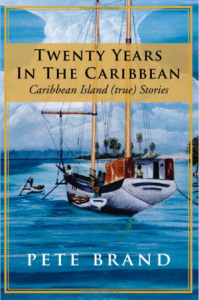 We grew several different plants that produced foliage for the wholesale florist business, but our main effort was growing anthuriums for the exporting of fresh cut blooms.
We grew several different plants that produced foliage for the wholesale florist business, but our main effort was growing anthuriums for the exporting of fresh cut blooms.
Anthuriums have a heart shaped spathe, which is shiny and wax-like. The blooms are very long lived from the time they are cut. Anthurium blooms come in many variations of red and also pink. There are also orange and white blooms commonly found in commerce. The spadix sticks up out of the colorful spathe and is reported to have upset Queen Victoria when British plant scientists first brought them back to England. She is reported to have exploded, “Get those phallic symbols out of my royal greenhouses!”
Although the anthurium is from the Western Hemisphere, Hawaiian growers and the US department of Agriculture in Hawaii have produced the most beautiful hybrids.
Anthuriums were originally epiphytes, growing in trees, much like orchids. They are commercially grown in shaded rows, planted like orchids in a loose woody medium rather than earth.
The planting medium frequently used is bagasse, (pronounced BAG-ass) a byproduct of the crushing of sugar cane stalks. Sugarcane is still grown in limited quantities on Dominica but here it is used exclusively for the distilling of rum. When the cane is crushed, the juice is immediately allowed to ferment for distilling and is thought to make the finest, most flavorful, rum. Crushed almost dry, the shredded cane stalks are not unlike the bagged mulch sold in US garden supply stores.
The crushed stalks can be had from the distillery for little more than the cost of loading and carrying it away. The distillery is glad to have it removed.
The sugar cane came into flower and the distillery began receiving it for crushing, so I made arrangements to secure half a dozen truckloads of bagasse for our anthurium plants.
As the fresh piles were deposited in the hotel parking lot, each dumped partially on the previous loads; the pile grew quite high. The smell is reminiscent of molasses or fermenting sugar, and our youngest was cautioned against playing in the messy, sticky material.
“Mommie, can I go down and watch the trucks unload, then?” Tooks asked.
“All right, Honey, but stay with your brothers down there, and keep out of the way of the trucks.”
Tooks hurried down the long flight of random steps of the path two steps at a time. We watched him until we were satisfied that his older brothers were keeping him out of harms way.
Soon, however, a puffing Tooks came back up on the run. “Mommie! Mommie!” he called breathlessly, “Do you know what Reed said?”
“What’s that, Honey?”
“Mommie, he said, Bagasse! And, and, he said it a lot, too.”
“Oh, that’s all right, Honey. That’s the name of that stuff down there; bagasse.”
“Then, can I say it?”
“Certainly.”
Tooks looked incredulous. He thought it over for a minute and then asked, “Mommie? You sure it’s all right?” He had suffered the indignity of having soap brushed across his tongue for saying bad words after being warned several times.
“Yes, Tooks, you can really say, bagasse,” Margie said.
He looked at me and I nodded agreement with Margie’s instruction. We could see him silently mouthing the two syllables of the word. Then he said “Bagasse!” tentatively.
His mother and I only smiled.
“Bagasse?” he tried again and we continued to smile at him. “Oh, Boy! Bagasse, bagasse, bagasse!” he said to no one in particular, and went skibbeling down the hill, all smiles, repeating it as he went.
